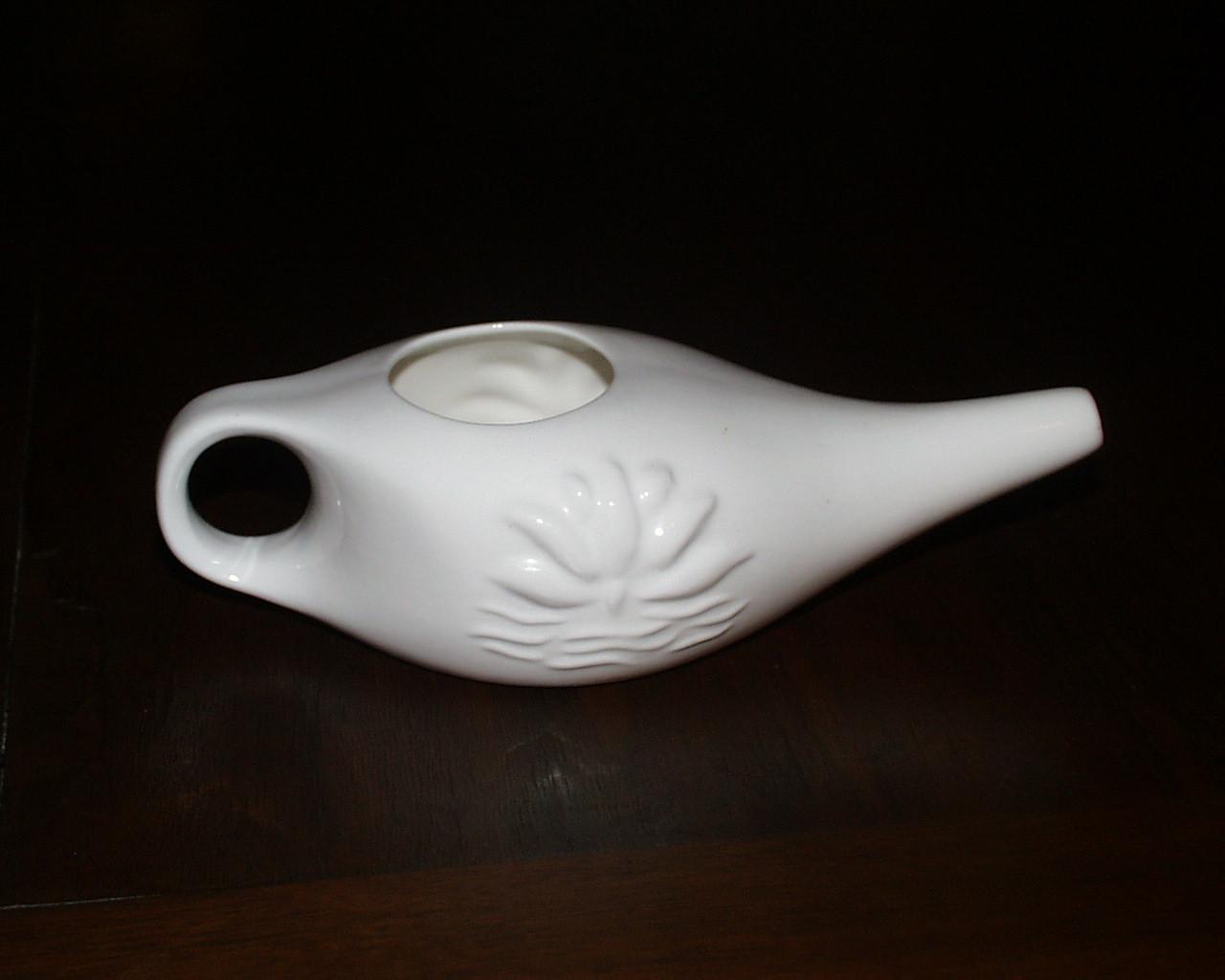How Can Yoga Help with Cold?
Common colds, often triggered by viral infections, are a widespread health concern, especially during colder seasons. In this article, we explore Jal Neti, a yogic practice that offers a natural and effective way to prevent and address common colds by maintaining nasal health.
What are Common Colds?
Common colds are considered to be the immune system’s response to viral invasion. Colds are contagious and may be passed on through hand contact or inhaling airborne particles released by someone when they cough or sneeze.
Since most cold viruses survive better in low humidity, colds are more prevalent in the cold months of winter and fall. The lower temperature during these seasons can also make the nasal passages’ lining drier, thus making it more susceptible to viral infection.
Research also shows that psychological and emotional stress and allergic disorders affect the nasal passages or the throat. The menstrual cycle also has an impact on a person’s susceptibility to common cold.
The strength of a person’s immune system plays an important part in the prevention of colds. Yogis for centuries have claimed that by treating the nose, diseases of the eyes, ears, sinus, throat, and head can be strongly and positively affected.

What Role does the Nose play in Breathing?
The nose is the “air conditioner” of the body. One of the many functions of the nose is to regulate the temperature and humidity of the incoming air. In a normally functioning nose, the air is moistened, warmed, filtered, cleansed, smelled, and analyzed as it travels smoothly and otherwise relatively unimpeded to the very back of the two nasal passageways at the posterior nasal apertures. Regular practice of Jala Neti helps to establish the correct working environment of temperature and humidity in the nose.
How does Jal Neti Cleanse the Nasal Cavity?
Jal Neti is a nasal irrigation technique in yoga used to clean out the nasal cavity and make it free of mucus and debris. Jal Neti’s history dates back many centuries and is an important part of the Shatkarmas, that is, practices to purify the human body. Followers claim that Jal Neti can rid the body of a variety of diseases and keep them at bay. So, it’s wise to consider shedding your apprehension and trying this wonderful practice.
Performing Jal Neti
Here’s a step-by-step video tutorial of Jal Neti https://youtu.be/sl_MFS9CAKM
The Jal Neti procedure involves pouring lukewarm salt water into one nostril and bringing it out through the other nostril. Then the nostrils are alternated. The Jal Neti pot is important to be able to practice nasal cleansing. It is a small pot with a spout that fits inside the nostrils. It looks like a small teapot or a small hand garden sprinkler.

There are many Jala Neti instructions to be kept in mind if one wants to perform this procedure correctly and to avoid uneasiness. To carry out the basic procedure:
- Add about half a teaspoon of salt to a Neti pot full of sterile lukewarm water.
- Stand with the legs apart.
- Hold the Neti pot in your right hand.
- Insert the nozzle of the Neti pot into your right nostril.
- Keep your mouth open and breathe freely through the mouth.
- Tilt your head slightly backward, then forward and sideways to the left so that the water from the pot enters your right nostril and comes out through your left, because of gravity.
- Allow the flow till the pot is empty.
- Repeat the same on your left side to clear this side.
- To clear the nasal passages of the remaining water, blow out the water by active exhalation through alternate nostrils as in Kapalabhati
Before starting with Jal Neti, your stomach should be empty. After Jal Neti, drying your nose is crucial. If your nasal passages remain wet, you may experience cold-like symptoms for a long time, and the residual dirty water in the passages can also give rise to infections.
Caution and Ideal Conditions for Jal Neti
The water temperature for Jal Neti is crucial; if it’s too cold, it can cause nasal congestion by swelling the nasal tissues, and if it’s too hot, it may irritate the mucous membranes. The ideal temperature falls between 70-100 degrees Fahrenheit, with closer alignment to body temperature being optimal. Additionally, the use of pure salt is essential for performing this cleansing technique effectively.
Benefits of Jal Neti
Besides being used to treat full-blown sinus infections, Jal Neti is perhaps the BEST preventive measure against common colds.
- It helps to clear nasal passages, removes cold, hypersensitivity, headache, sinusitis, and bronchitis, and stimulates olfactory nerves.
- Jal Neti helps solve sinus infections and allergy problems without the use of drugs with immediate, immense, and sustained results without any side effects.
- At the immediate level, Jal Neti is a great tool for any kind of respiratory disorder – sinusitis, allergy, asthma, hay fever to name a few. People invariably notice an immediate relief, which drugs fail to achieve. It helps to re-program the body’s natural mechanisms against respiratory complaints including sore throats, coughs, post-nasal drips, etc.
- Jal Neti rinses out the dirt and bacteria-filled mucous lining as the warm water loosens and dissolves any internal build-ups, and takes them outwards.
- Jal Neti has a cooling and soothing effect on the brain and is therefore beneficial for headaches, migraines, depression, mental tensions, and even hysteria and temper tantrums.
- It stimulates better powers of visualization and concentration and gives a feeling of lightness and clarity to the mind.
- It is excellent for those trying to give up smoking. It reduces mouth breathing and re-sensitizes the nose to the indecency and discomfort of ingesting smoke, therefore de-programming the brain of the physical and psychological addiction.
- Practicing nasal cleansing clears the sinus cavities and in turn increases the body’s capacity to fight against nasal infections. Similarly, with Jal Neti, allergies such as hay fever can also be kept at bay. More so, Jal Neti makes the practitioner breathe more freely with the nose. Therefore, problems such as asthma and bronchitis are also reduced. Sore throats, coughs, and tonsillitis can also be cured by performing Jal Neti regularly. It is beneficial for the eyes and ears too.

(Image by katemangostar on Freepik)
How Long should you do Jal Neti and How Often?
While the duration or the reiterations of the process cannot be stated, the amount of water to be used can. For one nostril, generally, half a liter of water is to be used. The water should be used at a stretch or with some rest. Since this is a shuddhikriya, you should not include it in your daily lifestyle.
Whenever your nasal path needs cleaning, the process can be performed. However, till the process is learned thoroughly, you may need to practice it daily. Once learned, you should use it as per your need. People living in polluted cities should try and make it a part of their lifestyle.
The side effects of performing Jal Neti are almost nonexistent. Jal Neti is a powerful yogic practice that not only aids in preventing common colds but also promotes overall respiratory health and well-being. Incorporating this technique into your health regimen can lead to a healthier, happier life.
